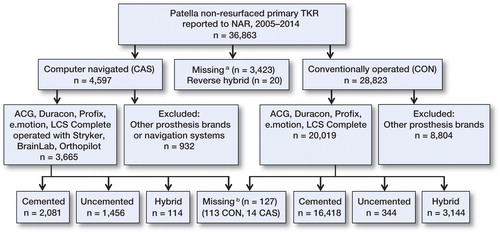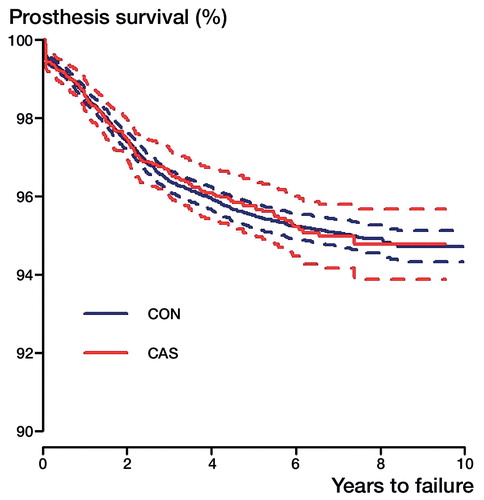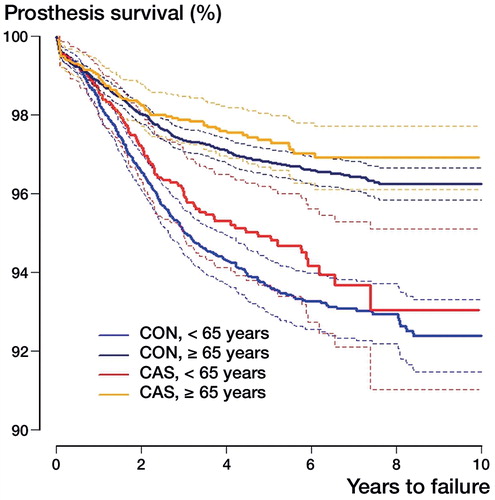Figures & data
Figure 1. Selection of patients. TKR: total knee replacement; NAR: Norwegian Arthroplasty Register; CAS: computer-navigated knee replacement; CON: conventionally operated knee replacement. a No information on use of computer navigation. b No information on fixation method.

Table 3. Reasons for revision in computer-navigated total knee replacement (CAS) and conventionally operated total knee replacement (CON) for all patients and for patients less than 65 years of age
Table 1. Demographic data for computer-navigated total knee replacement (CAS) and conventionally operated total knee replacement (CON)
Figure 2. Kaplan-Meier survival curves with 95% confidence intervals (broken lines) for computer-navigated total knee replacement (CAS) and conventionally operated (CON) total knee replacement. Log-rank test: p = 0.9. 8 years at risk: CAS, n = 354; CON, n = 2,836.

Figure 3 Cox regression survival curves with 95% confidence intervals (broken lines) for computer-navigated total knee replacement (CAS) and conventionally operated total knee replacement (CON) in patients who were more than or less than 65 years of age, adjusted for sex, ASA category, diagnosis, previous surgery, prosthesis brand, and fixation method. 8 years at risk: ≥ 65 years old: CAS, n = 228; CON, n = 1,881; < 65 years old: CAS, n = 126; CON, n = 955.

Table 2. Kaplan-Meier survival (KM) and Cox-adjusted relative risk of revision for computer-navigated total knee replacement (CAS) and for conventionally operated total knee replacement (CON)
